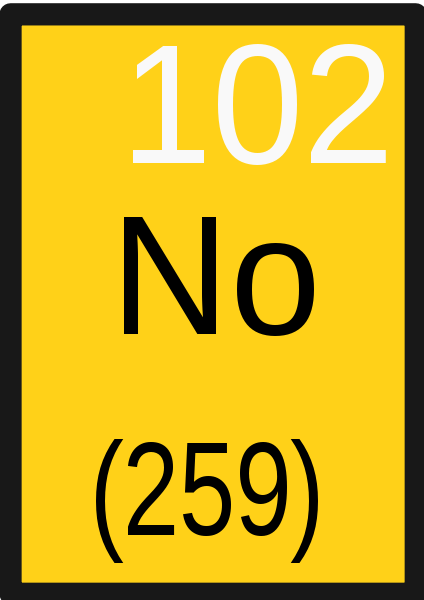Nobelium
Nobelium is a synthetic element with the symbol No and atomic number 102. It was first correctly identified in 1966 by scientists at the Flerov Laboratory of Nuclear Reactions in Dubna, Soviet Union. Little is known about the element but limited chemical experiments have shown that it forms a stable divalent ion in solution as well as the predicted trivalent ion that is associated with its presence as one of the actinides.
Research scientists at the Joint Institute for Nuclear Research in Dubna, Russia synthesized nobelium for the first time in 1966.
The element was given its name in honor of Alfred Nobel.
‘Nobelium’ had actually been proposed as the element 102′s name in 1957, by scientists from the Nobel Institute of Physics in Sweden who believed they had produced it. Further investigations ruled out the possibility they had made nobelium.
A stronger claim to have made nobelium was made in 1958 by scientists at the University of California, Berkeley.
After reviewing all claims IUPAC (International Union of Pure and Applied Chemistry) ruled that the discovery was most likely to have been made in Dubna in 1966.
| Symbol | No | |
| Atomic Number | 102 | |
| Atomic Weight | 259.1009 | |
| Oxidation States | +2, +3 | |
| Electronegativity, Pauling | ||
| State at RT | Solid, Metal | |
| Melting Point, K | ||
| Boiling Point, K |
Appearance and Characteristics
Harmful effects:
Nobelium is harmful due to its radioactivity.
Characteristics:
- Nobelium is a synthetic, highly radioactive metal that has only been produced in miniscule amounts.
- Nobelium is normally a divalent ion in aqueous solution.
Uses of Nobelium
- Nobelium is of scientific research interest only.
